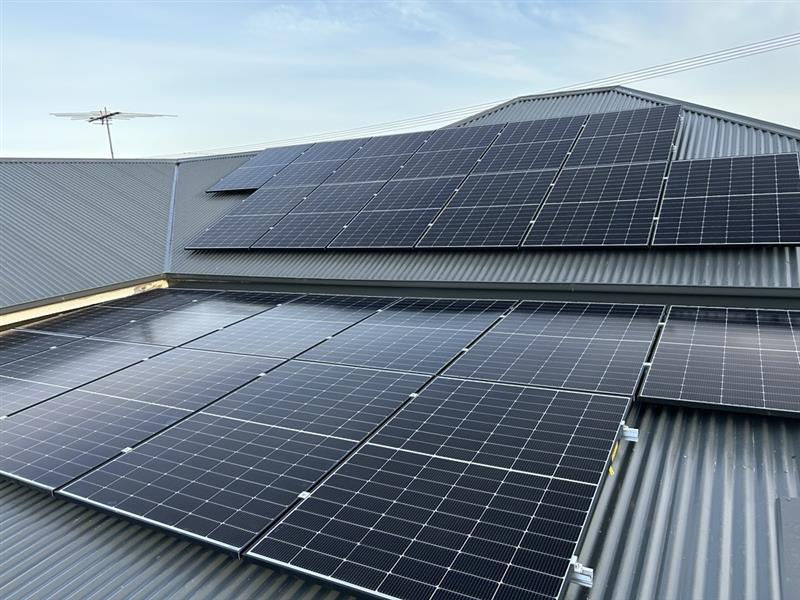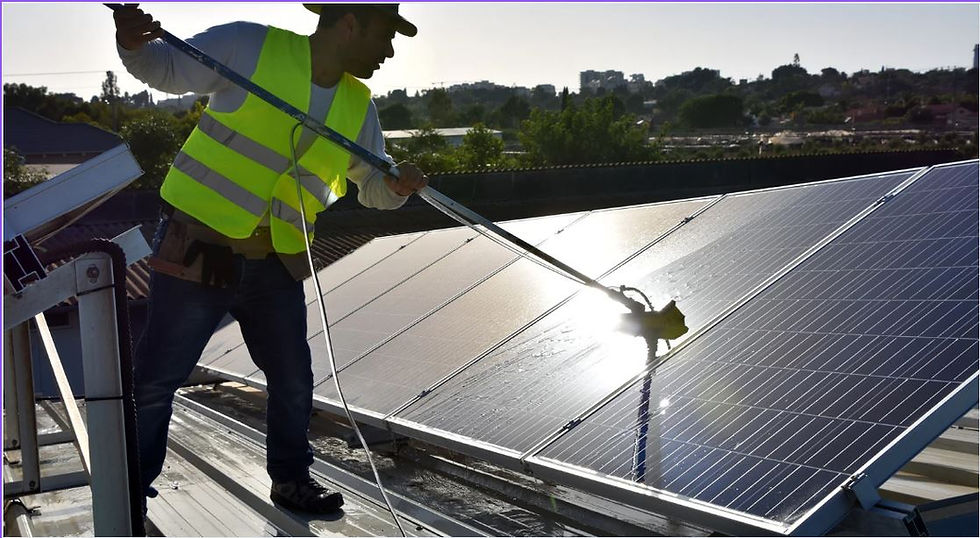Do Bigger Homes Always Need More Solar Panels?
- Marketing AR Energy
- 5 days ago
- 4 min read
When Australians start looking into solar, one of the first questions that comes up is: “If my home is bigger, do I automatically need more solar panels?” It sounds logical, but the truth is more nuanced. Bigger houses don’t always mean bigger energy bills, and energy bills — not square metres — are what actually determine how many solar panels you need.
Let’s break down how solar system sizing really works in 2025, and why a smaller house might need just as many panels as a larger one.

Solar Panel Sizing Depends on Energy Use, Not Floor Size
The key factor in deciding how many panels you need is how much electricity your household consumes, not the physical size of the building.
A large home may have energy-efficient appliances, good insulation, and minimal daytime usage.
A smaller home may run multiple air conditioners, a pool pump, and electric heating — driving up electricity demand.
Example: A 5-bedroom home in Adelaide with only two retirees might use less power than a 3-bedroom home with a family of five and a pool.
So, it’s not about the number of bedrooms or square metres, but rather your daily kilowatt-hour (kWh) usage.
Typical Solar System Sizes in Australia
In 2025, the most common residential solar system sizes are:
6.6 kW system: About 16–18 panels. Ideal for average households.
8–10 kW system: Suits larger families or homes with higher usage.
10–13 kW system: For big households, all-electric homes, or those running EV chargers.
For most Australians, a 6.6 kW system is the sweet spot — but if your usage is higher (say, 25–40 kWh a day), stepping up to a 10 kW system makes more sense.
Factors That Really Affect How Many Panels You Need
1. Household Energy Habits
The biggest factor is how and when you use power. Running heavy appliances during the day allows you to maximise solar generation. If most of your usage is at night, you may need a battery to make solar worthwhile.
2. Appliances and Features
Pools and spas are some of the biggest electricity guzzlers.
Air conditioning across multiple rooms can push demand up in summer.
Electric vehicles require additional capacity to charge regularly.
3. Roof Space and Orientation
Even if your usage is high, roof space limits how many panels you can fit. North-facing roofs deliver the best output in Australia, but east- and west-facing setups can still work well.
4. Location and Climate
Solar output varies by region:
South Australia and Queensland often generate more per panel.
Cloudier regions (like parts of Tasmania or Victoria) may require more panels to cover the same usage.
5. Future-Proofing
If you plan to buy an EV or switch from gas to electric appliances, it’s smart to install a slightly larger system now rather than upgrading later.
Do Bigger Homes Ever Need More Panels?
In many cases, yes — larger homes often come with more appliances, multiple fridges, or bigger heating and cooling systems. But this isn’t always the rule. A big, energy-efficient home with LED lighting, modern insulation, and solar hot water may use less power than a smaller, older property running inefficient appliances.
The bottom line: it’s your electricity bill that tells the real story, not your floor plan.
Calculating Your Solar Needs in 2025
To estimate how many panels you need:
Check your electricity bill – look for your average daily usage (kWh).
Match usage to system size – for example, 20 kWh/day usually aligns with a 6.6 kW system.
Factor in export limits and rebates – in most Australian states, you can still receive feed-in tariffs for excess solar sent back to the grid.
Quick example:
Household A: 15 kWh/day → 5 kW system (~13 panels).
Household B: 30 kWh/day → 10 kW system (~25 panels).
Incentives and Support in Australia (2025)
Solar remains one of the most cost-effective upgrades thanks to ongoing support:
Federal STC scheme: Reduces upfront system cost (verify eligibility via Energy.gov.au).
State programs: South Australia, Victoria, and other states still offer rebates and low-interest loans for solar or batteries (check current rules locally).
Feed-in tariffs: While rates vary, they continue to help offset night-time grid usage.
Practical Tips Before Installing Solar
Get a usage assessment: Don’t guess based on home size. Use actual energy data from your bills.
Consider efficiency upgrades: Upgrading to efficient lighting and appliances may reduce the system size you need.
Think long term: If you expect energy use to rise (kids becoming teens, EVs, or all-electric heating), size up a little now.
Use an accredited installer: Always choose a Clean Energy Council–approved installer to ensure safety and reliability.
Conclusion: It’s About Use, Not Size
Bigger homes don’t always mean more solar panels. What really matters is how much electricity you use and when you use it. By basing your system size on your actual energy needs rather than your home’s footprint, you’ll make the smartest investment.
If you’re considering solar in 2025, grab your latest electricity bill and talk to a local solar installer in Adelaide. They can design a system that fits your household’s lifestyle — not just your roof size.







Comments